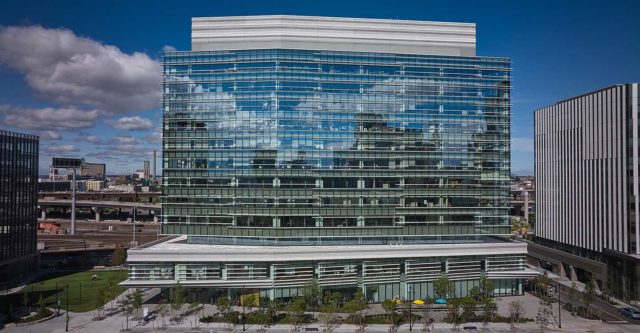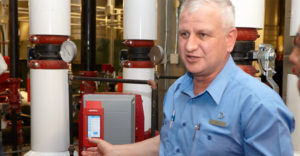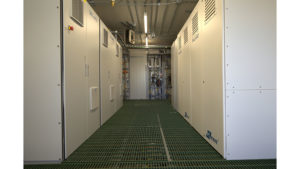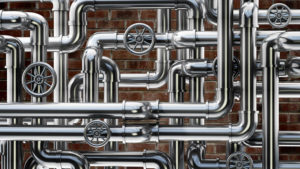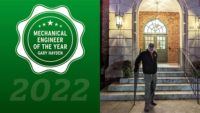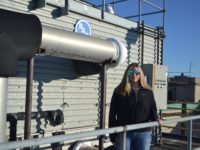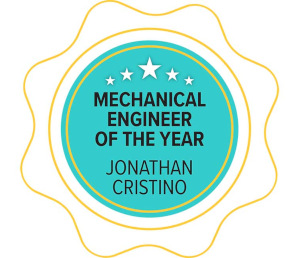
Jonathan Cristino, PE, may be considered one of the young guns in the mechanical engineering space, but he has definitely made an impact in those 10 years. Cristino has taken the lead role at his firm in meeting the latest requirements for decarbonization and electrification for new and existing buildings in his home state of Massachusetts.
His knowledge and experience in understanding new heat pump technologies, and his willingness to explore sustainable engineering designs and practices instead of relying on the way things have always been done have earned him the distinction of being named PM Engineer’s 2023 Mechanical Engineer of the Year.
Tinkerer turned engineer
Born and raised in Hopedale, Massachusetts, Cristino never moved around much. He went to school at the University of Massachusetts Dartmouth and currently lives one town over from where he grew up. As a kid, he always loved tinkering with old cars and recreational vehicles like snowmobiles, four-wheelers and other machinery.
“It never really hit me, ‘Oh, mechanical engineering is definitely what I want to do,’” he explains. “When I look back to when I was doing college applications, there were a few selections — business, science and engineering. So I thought, ‘What do I really like to do?’ I really liked taking things apart and then fixing them back up, whether it was a bicycle or something small like a Lego set. I figured mechanical engineering would be the best fit because I was always investigating and trying to make things better.”
After receiving his bachelor’s degree in 2013, Cristino found himself in the predicament of not knowing which path he wanted to pursue. When AHA Consulting Engineers offered him a position as a HVAC design engineer, Cristino again thought it was a great fit and jumped at the opportunity.
“I really like thermal systems and thermodynamic properties — all the items that go with HVAC design,” he says. “I really excelled at all that in college.”
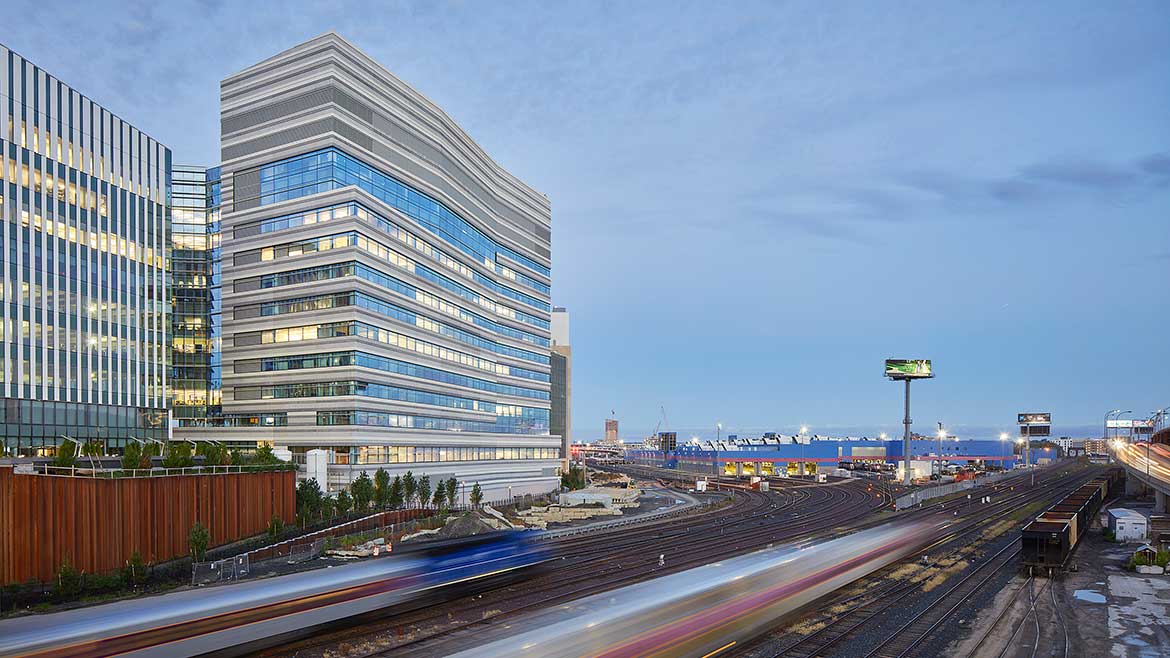
The MITIMCo, South of Maine, Site 3 Building in Cambridge, Massachusetts high-rise lab/office project totaled about 300,000 square feet.
One unique thing about Cristino is he has spent the entirety of his professional engineering career with AHA — something not heard of too often in this day and age.
“I’m not going to say it was smooth sailing the whole way — there were definitely some difficult times,” Cristino explains. “But the camaraderie of the company itself and the family-style culture that they incorporate there really made it something that I didn't want to let go of. They also have a lot of initiatives set in place where they are looking to grow the younger generations within the company to become successful leaders. There’s a lot of opportunity for career advancement.”
Today, Cristino is a partner and mechanical engineer out of AHA Consulting Engineers’ corporate headquarters in Burlington, Massachusetts. The firm has two other locations in Boston and Atlanta.
“I like that every single task ends up being different and that there's always a change in what I am doing, whether it be talking to the clients who have a specific initiative or need direction on how they want the building to be,” Cristino notes. “I like being involved and providing recommendations and ideas of where the market currently stands, where the future is going and how to help them get the best building or property in the market for them to have success.”
Sustainability leader
Living and working in Massachusetts, decarbonization and electrification are having a huge impact on Cristino’s work as a mechanical engineer, he notes. The state has committed to reducing gas emissions by 33% compared to 1990 levels by 2025, 50% by 2030 and plans to become a net-zero emissions state by 2050.
“Massachusetts has set forth a plan and guideline for decarbonization for existing and new construction buildings,” he explains. “Massachusetts is trying to be one of the forefront communities with this decarbonization goal. It has changed the way we think as engineers — as well as developers and property owners in how much money they want to allocate towards new developments or fixing up existing infrastructure.
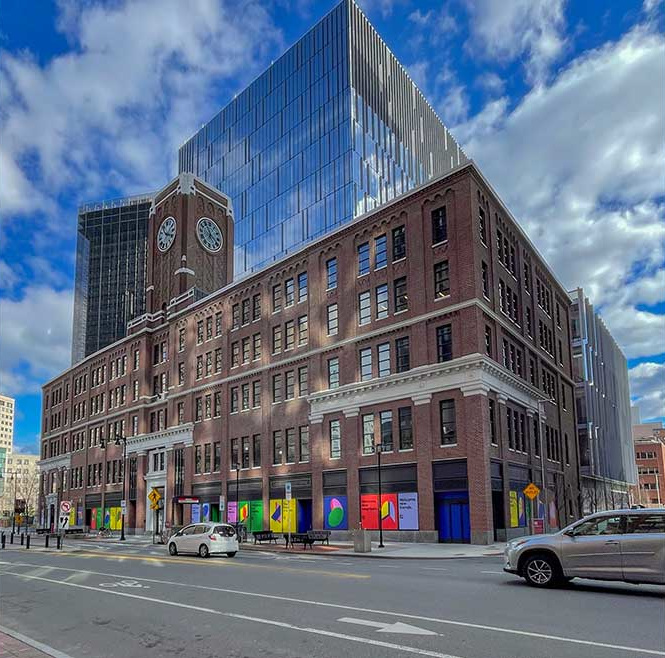
(Left) The South of Main “SoMa” Site 3 building addition is connected to the five-story historical building at 238 Main Street through a central atrium. The tower features a glass curtainwall facade. (Right) Jonathan Cristino
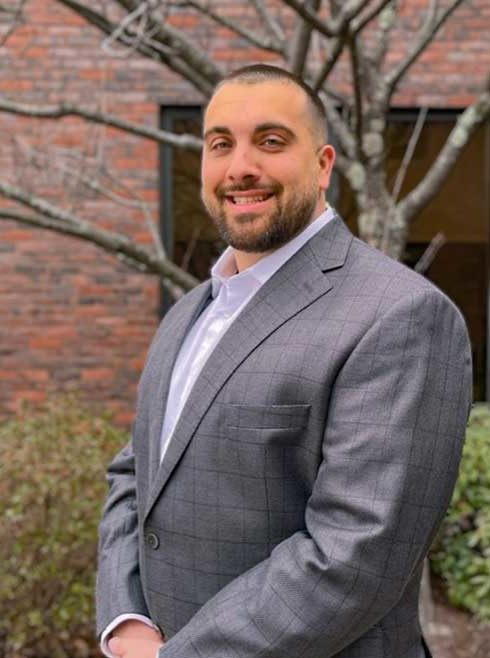
“It’s been a big change from what we used to think — gas was always the best way to heat, especially up in the Northeast or in colder climates,” Cristino continues. “Now that climate change is being recognized as a known issue and concern, it's changed the way we think about gas and how we use it. We’ve gone from using gas boilers to trying to incorporate some sort of heat pump technology. Granted, it is a newer technology, at least for the use of heating in colder climates due to their limitations of working in extreme weather. But it is growing and it is proven to be very efficient and useful for building owners as far as their payback.”
Cristino says the majority of his building designs include heat pump technology of some sort, but it varies. “We can do air-source heat pumps, water-source heat pumps, geothermal heat pumps and then, a newer equipment development that's being introduced is exhaust-source heat pumps. We do a lot of work in the life science sector, which uses a lot of 100% outdoor air, which becomes a very energy-demanding system, and the exhaust-source heat pump has been a major layer in that opportunity to decarbonize buildings.”
One of the biggest advancements in the industry are those in heat pump technologies and how the products have evolved to use the standard refrigeration cycle for both heating and cooling.
“That has really opened up pathways for us to, one, decarbonize, and two, become more efficient,” Cristino says. “Because of this huge focus on trying to decarbonize buildings, there’s a lot of effort on how to enhance these systems. The limitations we had previously seen on the heat pump technologies are now going to be slowly withered away. We should be able to see heat pumps producing hotter temperatures, even temperatures that we would now normally say are excessive and not needed. And, in conjunction, also maintaining those temperatures at sub-zero degree temperatures.”
Notable work
Earlier this year, Cristino was awarded a 2023 Excellence Awards in Commercial Real Estate by Boston Real Estate Times, for ‘Sustainability and Engineering Firm of the Year.’ The award was presented for Cristino’s work in successfully planning two new all-electric high-rise laboratory facilities in Somerville, Massachusetts, totaling over 1 million square feet for the Assembly Innovation Park. The project is still under construction.
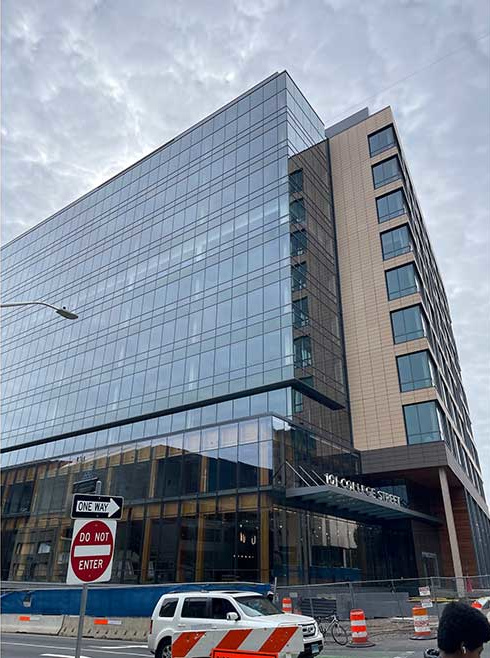
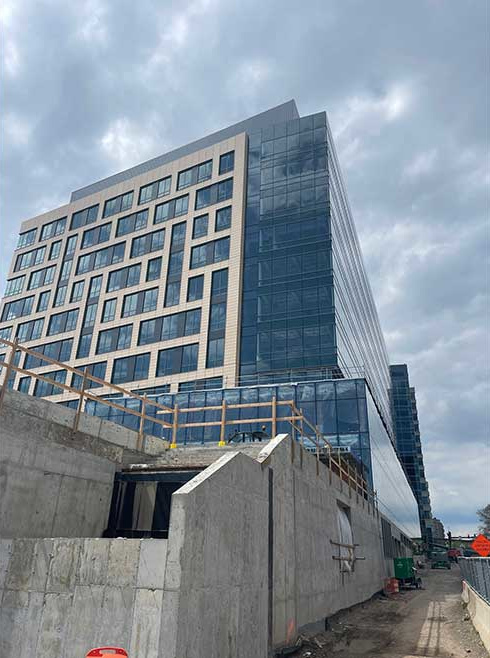
Cristino designed mechanical systems for a high-rise lab/office project at 101 College Street in New Haven, Connecticut. The 10-story high-rise is a $250 million state-of-the-art life sciences building.
“All the buildings are set to be laboratory/office buildings,” Cristino says. “They include a 100% outdoor supply air handling unit, exhaust air handling unit, with an enhanced energy recovery system incorporating exhaust-source heat pumps, air-source heat pumps, a hybrid heat recovery centrifugal chiller and chilled water plant with cooling towers.
“There are a good amount of challenges [when designing high-rise labs],” he adds. “High-rise buildings, in particular, have so much rentable square footage within the building, and a limited amount of mechanical and roof space, and the restrictions they place in these areas really becomes a challenge on trying to make everything fit and also have access for maintenance purposes.”
Cristino has also worked on two impressive lab office buildings — the MITIMCo, South of Maine, Site 3 Building in Cambridge, Massachusetts, and the 101 College Street Development in New Haven, Connecticut.
“101 College is a 10-story lab office building, which equates to over 400,000 square feet,” Cristino notes. “The Site 3 project is a 14-story lab/office building at approximately 300,000 square feet. Those systems were a little more traditional with 100% outdoor supply and exhaust air handling units, exhaust air handling units, an energy recovery system, gas-fired boilers, centrifugal chillers and cooling towers.”
Cristino’s favorite part of his job is getting out into the field to visit the job site.
“Being hands-on with folks and seeing the equipment come to life is amazing,” he says. “The first phase for us is always seeing it on paper or a computer — you don’t really get that perspective until you actually go out onto the site. In real life, it's an eye-opening moment. I also like getting the questions and challenges out into the field if problems arise, as they always do, and there's a challenge on how to make it right and what needs to be done to change it, I like being able to tackle those hands-on and do it quickly.”
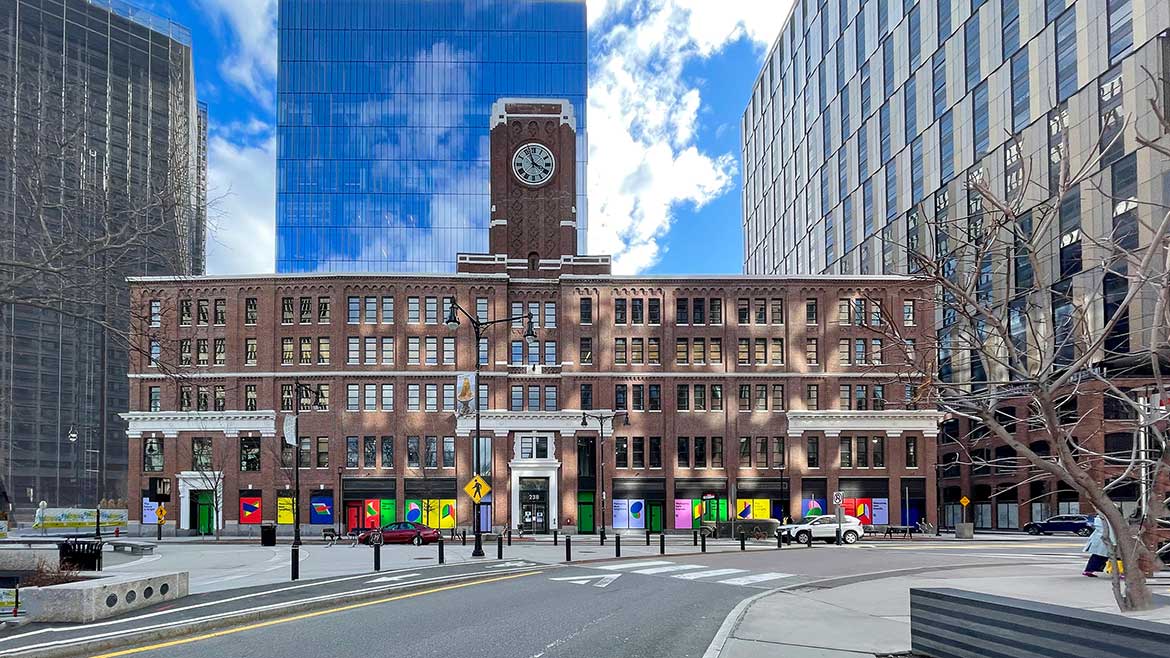
The South of Main “SoMa” Site 3 building is a 14-story 300,000-square foot high-rise laboratory and office tower add renovation to the existing five-story building at 238 Main Street.
High regards
Chris Curran, partner and plumbing project engineer at AHA Consulting Engineers, nominated Cristino for this year’s award.
“I met Jon about 10 years ago at a company holiday party,” Curran says. “Although young by industry standards, Jon is old-school in his work ethic. This old-school mentality is blended with his new school technological approach to projects. He is not afraid to take on new challenges, new systems or new programs. You’ll never hear him say ‘We’ve always done it this way.” You’re more likely to hear, “Let me see what I can come up with.”
Curran notes that Cristino is unflappable — an important and underestimated trait in an engineer. “He is able to roll with the punches, shift gears and keep things rolling without batting an eye. There is a tendency to become frustrated when things are constantly changing, and you would never know that Jon is frustrated at all, no matter the challenge.
“Jonathan is very dedicated to his work, but he is even more dedicated to his family,” Curran adds. “He is also an accomplished devourer of fine steaks. It really is impressive to witness.”
Robert Parker Jr., partner and mechanical director of AHA Consulting Engineers, also met Cristino when he was hired in 2013 after graduating from college.
“Jon was hired in 2013 directly from college — he had already passed his FE Exam, which is a great achievement for young engineers while all the knowledge learned in college is fresh in their minds,” he says. “Jon recently obtained his PE in 2022. He worked on a few projects with me as a young designer while I was lead mechanical on projects and has become one of the primary team leaders. Jon is very personable, down to earth and works well mentoring those around him. He is willing to listen, understand, reason and provide clear direction. Jon has also played a very important role in our recent team collaboration on developing HVAC concepts for electrification and decarbonization of large laboratory projects (high rises). This has been a significant challenge for our industry which he has met head on.”
Meeting industry changes head-on
The COVID-19 pandemic made a drastic change to the plumbing and mechanical industries and has left a lasting impact.
“We were seeing a substantial amount of office work, and then once COVID hit, everyone was working from home,” Cristino notes. “That work-from-home model seemed to be somewhat successful, and it also was leveraged by the employees. In order for companies to keep them, they opened up this hybrid approach, and that really saw the office sector diminish and almost completely go away for the time being. Then, there was this strong push for life sciences.”
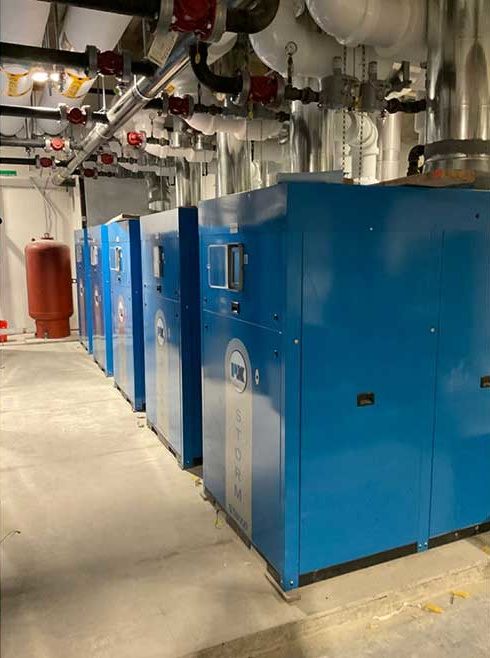
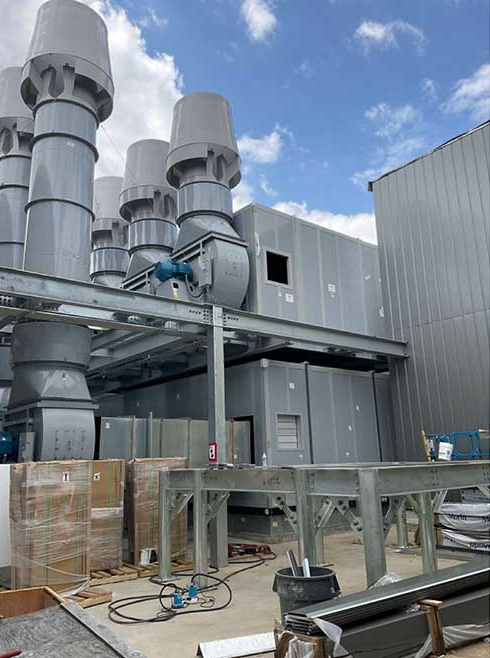
Pictured above are the boilers and exhaust air handling unit Cristino designed for the 101 College development.
Cristino notes retrofitting office buildings for labs, GMP facilities and pharmaceutical companies was a big challenge. “Office buildings don’t need as much HVAC equipment or even other MEP infrastructure overhead. So the floor to floor heights are pretty low, speaking from a lab perspective. Trying to get that equipment and infrastructure to fit within an office building but still satisfy the requirements of a lab was an interesting challenge.”
Additionally, working from home presented its own challenges in communication.
“Communication slowed down because you weren’t getting as much in-person interaction, but people realized that and there was a big push for Zoom meetings,” Cristino explains.
“People also realized that it helped save a lot of time when you're trying to set up in-person meetings everywhere, scattered throughout various places, even if it's in the same city, trying to hop around meeting to meeting took up a good amount of time. Once the people got comfortable with the Zoom meetings, or the go-to meetings, Teams meetings and whatnot, it allowed time to really open up and manage that wisely so you could do multiple things, or do more things than you were normally expected to do. I would take that as a benefit. Obviously, as a hindrance, it would be the whole in-person communication and that teamwork building that you lose.”
On top of adapting to changes during COVID, Cristino says the most difficult part of his job is managing budget expectations.
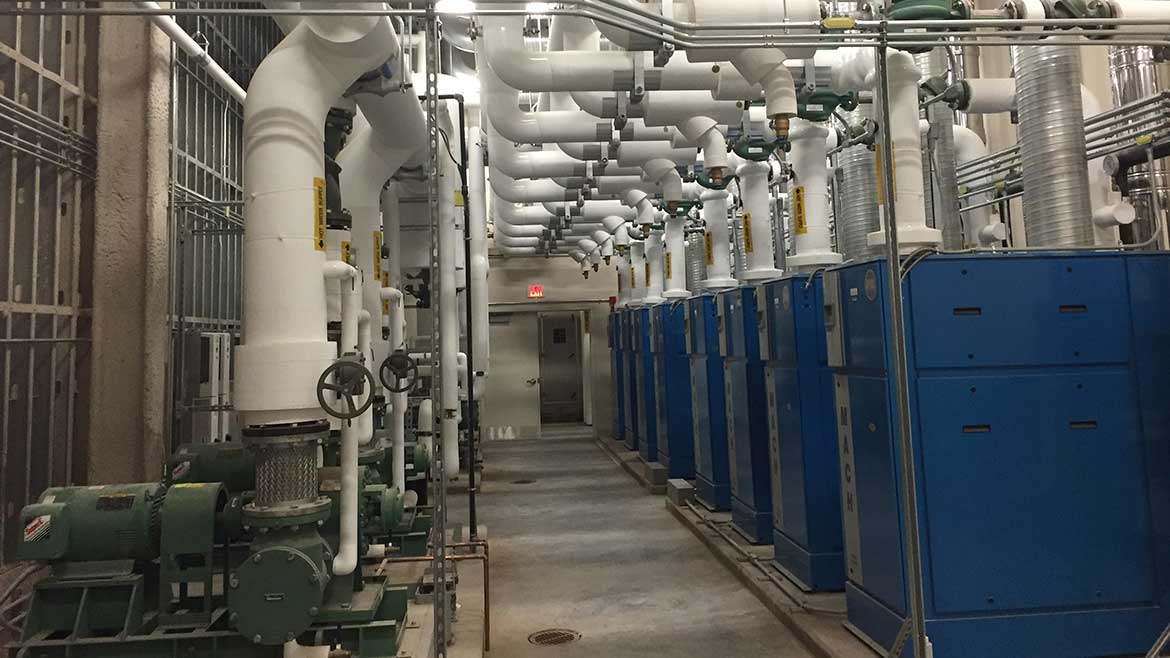
A boiler plant designed by Cristino.
“Probably the most challenging aspect is trying to incorporate a design that you know is the best fit and most efficient — you want to build the Mercedes — but the owner has a budget and money talks, so you’ve got to settle with a Toyota or Honda, something reliable and economical. Trying to meet between the lines and not over-engineer the system, but give them the ideal infrastructure that's going to make the owner happy and successful.”
For Cristino, a successful project is one that stays within budget, has a clean construction process without many changes and hiccups as far as procurement and installation and has a seamless commissioning process. “The end goal is to always keep the client happy.”

A chiller plant designed by Cristino.
Get involved
For those looking to become mechanical engineers, Cristino’s advice is to never give up.
“It’s not always going to come easy, but dedication and hard work will lead to success,” he says.
He also advises getting involved with industry organizations, such as ASHRAE.
“If you want to be successful in the industry, you’ve got to eat, sleep, breathe the industry, and that means going to industry events,” Cristino says. “You learn from them and you can communicate with people, whether they're in the industry or not. It really opens up the avenue and it helps you become a better, more successful person within the industry.”
Outside of the office, Cristino used to enjoy swinging a golf club, but he has now hung them up in favor of focusing on his one-year-old daughter Sofia. “She’s my hobby, now,” he says.
Looking toward the future, Cristino really stresses the urgent need for decarbonization.
“Engineers really need to investigate all the different types of technologies that are coming out and don’t be afraid to push the boundaries of what was always traditional,” he notes.
